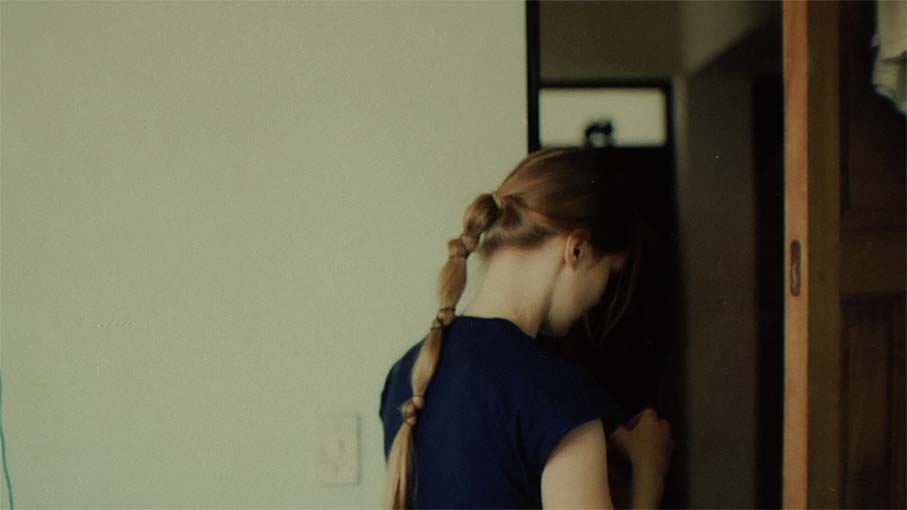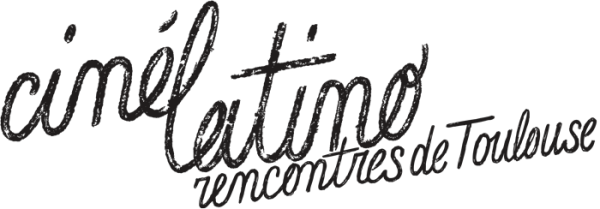- Film présenté cette année à Cinélatino
Rivers of Men / BAFICI, HAVANA, MORELIA, AMBULANTE (México)
- Direction
- Tin Dirdamal
- Country
- Mexico, Bolivia
- Format
- Feature film
- Type
- Documentary
- Original title
- Muerte en Arizona
- Planned casting
- The cast is the director and the people surrounding his apartment in the city of Cochabamba, Bolivia.
- Scenario
- Tin Dirdamal
Tin Dirdamal
Born 165 kilometers south of the US-Mexico border, self-taught filmmaker, he measures the success of his films by how much of himself he was able to abandon in the process. An advocate of plagiarism and a great ignorant of world affairs. He believes that lies can be an instrument to approach truth. He knows how to find underground water and is convinced he can document the future.
Filmography
– Dark Light Voyage, feature, 2021
– Mort d’Arizona, feature, 2014
– Rivières d’hommes, feature, 2011
– DeNadie, featyre, 2005
Sundance (award), Visions du Réel, IDFA, Jihlava (award), Mar del Plata, FICUNAM, L’Alternativa (award), BAFICI, WDR-ARTE…
Note of intent
The large living room of my great love’s apartment sits in silence. Our discolored mattress rests with no life. An old audio-recorder becomes a sort of diary. I begin to narrate the story, how I got here
and the details of my return. I had always suspected that love, in its genuine intensity could only ever be momentary. Then I met her. I wanted life with her, but I was too late. Observing outside while remaining inside calms me. The purpose I find in observing the existence of others outside begins to reveal the beauty in my loss, and after many months: liberation. It remains unclear if it was the making of this film that provoked my transformation or if I was simply
documenting this process. With no formal film education, filmmaking is a tool with which I experience life. I donʼt perceive any film I have made to be finished, simply visual interruptions of an ongoing process of discovery. I never grab a camera to prove a point, but rather hoping that the process will reinvent me. In my last films I explored and exposed the intimacy of others. I’ve come to understand that by doing this I as well expose a part of myself. With Death in
Arizona it’s the first time that I expose myself directly, and by doing this I think I can more profoundly reveal a fragment of the human condition.
Death in Arizona is a simple film that observes life going by in the distance. It gives relevance to waiting patiently and the importance of solitude. It reveals that epic battles donʼt need to be fought in
a vast crowded landscape, but that rather significant battles can be fought inside 4 walls against ones own demons. It questions our perception and understanding of love and how our desire for it to be permanent may lead to our
demise. This film suggests the capacity we all have to envision ourselves differently and be able to transform into different people.
Synopsis
A contemplative film about a filmmaker’s lost love. Devastated after being abandoned by a powerful love, he returns to her now empty apartment where they met and lived in the city of Cochabamba, Bolivia. With no intention to turn his footage into a film, he begins to document himself through the empty spaces, and the remains of a profound love contained in these walls. The camera becomes a vehicle of self-liberation as he attempts to take this loss and rid it from suffering. Surrounded by a Bolivian city submerged in an unceasing revolution, tainted by political unrest, the life outside the apartment begins to make its way inside. After searching in every room and corner for some comfort, the camera begins to look out the windows. The busy schoolyard of a high-school, the changing seasons, the night feuds from the next door neighbors, a girl playing in a junkyard of metal scrap, the demolition of an old house and the subtle changes over the course of 1 year help shape a filmmaker’s own inner battles and transformations. A film about a man’s inner journey, shot entirely from his now 3rd floor apartment, the relationship with his windows as a vehicle into his inner quarrels in pursuit of answers.
Visual concept
I observe the slow destruction of an old adobe building across the street. Over the course of several months, three men use sledgehammers, shovels and their hands to remove walls, ceilings and doors. Their slow, repetitive movements appealed to me. One of the workers realizes that he is being filmed. He stares back long and hard without looking away. After some days, his initial confronting look becomes intrigued and kind. One day the never come back. Through the crevasses and into the night I take you to the naked streets from my windows. An old woman out on her balcony during these deep hours of the night. Is she like myself unable to sleep because of a
troublesome parade of thoughts? I begin to film myself; sitting as I look out the window, eating, sleeping, waiting for change to occur. The rhythm is penetrating, but rhythmic, like a clock. Some moments are hectic, when I get desperate or lost. Sound undertakes a complex role in this film; it is definitely the most experimental element. At moments it disassociates from the image, it is muffled and distorted; it overlaps and accompanies my struggling
state of mind. Audio voice fragments confront the film. Interventions speak intimately of this journey through pain and depression, distraction, eventually leading to liberation. By no means are the voice interventions
limited to this lost love story, unhindered I ask questions, remember stories of my childhood, invent tales and take on lives that are not my own.

- Objectives sought in Films in Development
We hope that Cinema en Developpment can help us get closer to the finishing film and its distribution: finishing funds from co-financiers, foundations or film funds, as well as achieving possible distribution thru curators, festivals or distributors.
- Shooting planned date
–
- Planned shooting location
Cochabamba, Bolivia
- Budget
- €85,700 EUR
- Project's development phase
Death in Arizona began filming in 2009. After 100 hours of footage we have recently began the editing stage. Its approximate completion date is October 2013.
- Production
- Tranvía, Piano























